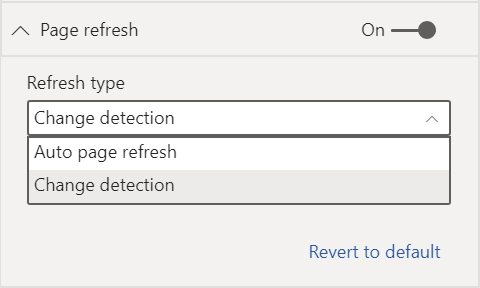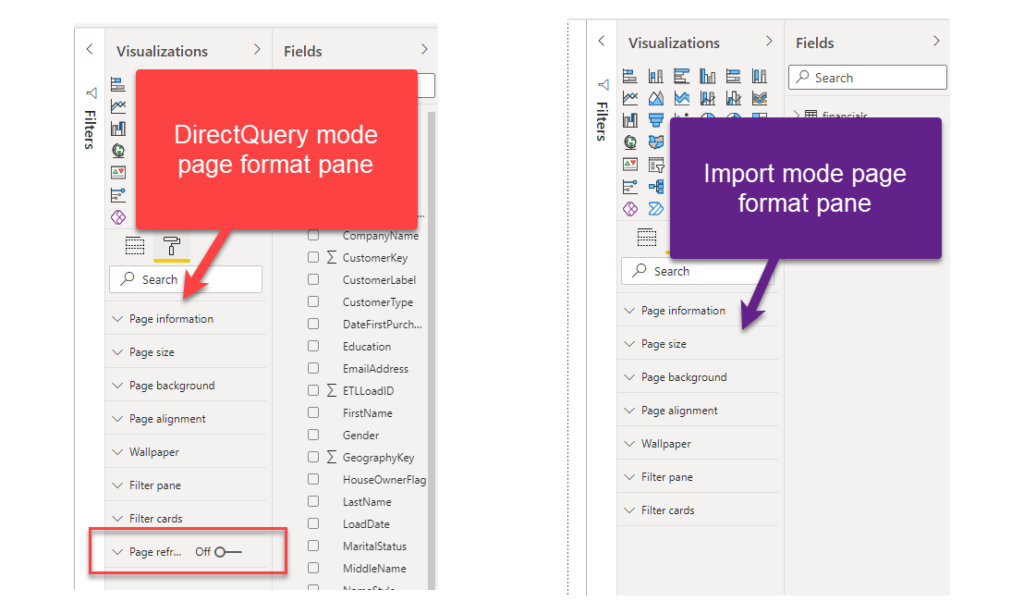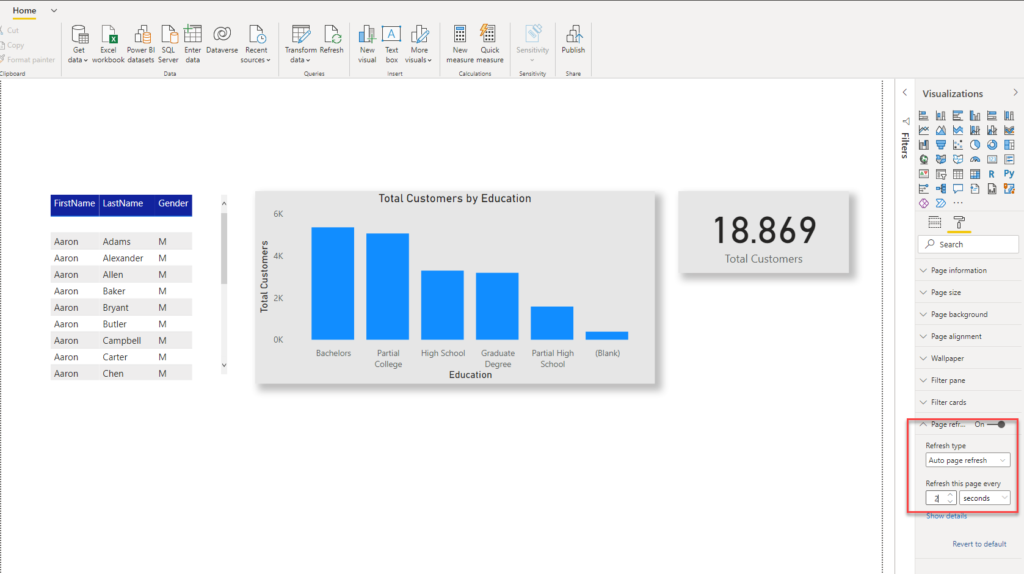

Automatic page refresh is supported only in DirectQuery storage mode, or Mixed mode containing at least one DirectQuery data source.To illustrate, if you have 20 concurrent users running this report, and we had 3 visuals on the report page, that’s 20×3 = 60 queries every 2 seconds! Now, imagine the impact if you have 10+ visuals on the page… When you set refresh intervals to low values, like 2 seconds in our example, consider the workload your queries will create, especiall with Fixed interval type.If you expect data from the underlying table to change every 5 minutes, don’t set the Auto page refresh interval lower than 5 minutes.General considerationsīased on the conclusions from tests performed above, here is the list of general rules you should keep in mind when using the Automatic page refresh feature: Wait, what?! This is not going to work! As you may see in the message on the top, the Change Detection type, unlike Fixed interval, which will work in all capacities, requires a Premium license. Once in Power BI Desktop, and using a DirectQuery storage mode, I can configure a Page refresh property: Configuring Auto page refresh in Power BI Desktop Let’s now see what happens under the hood when using each of these types.

The key difference compared to Fixed interval is, you have to specify a measure that’s going to be monitored (think of it, like checking if there are new records in the underlying table) – after the defined fixed interval, Power BI will generate ONE SINGLE query to check if the specified measure changed – if yes, it will execute remaining queries to refresh all the visuals…If not, nothing happens with the report page! You’ll again set the interval, but this time, different things happen in the background. In essence, it works similarly to a fixed interval type to some extent. This means, every single visual will generate a separate (direct) query and fire it to an underlying data source. You set the desired interval (ranging from 1 second to X days), and all visuals will be refreshed when that interval is reached. This is the basic way of scheduling an automatic refresh of the page. Once entered, those credentials are retained with the dataset.The next important consideration is which type of Auto page refresh to use…Oh, yes, there are two different types, so let’s examine both of them in more depth. You're only required to sign in to a data source the first time you use refresh on that dataset. If you connected to an app from an online service, the credentials you entered to connect are carried over for scheduled refresh. If you are using the personal gateway to refresh data, you must supply the credentials to connect to the back-end data source. Data source credentials Power BI Gateway - Personal You only see an enterprise gateway available if your account is listed in the Users tab of the data source configured for a given gateway. You can also select the enterprise gateway if one is available for you. If you have a personal gateway configured and it's online, it's available to select.
#POWER BI DESKTOP AUTOMATIC REFRESH HOW TO#
You also see a message indicating how to install the personal gateway. If no gateway is available, you see Gateway connection disabled. You see different options here depending on whether you have a personal, or enterprise, gateway online and available.

In the navigation pane, under Datasets, select More options (.) next to a dataset listed. For more information about data refresh, including limitations on refresh schedules, see Data refresh. You specify refresh options in the following areas of the Power BI service: Gateway connection, Data source credentials, and Scheduled refresh.

This article describes the options available for scheduled refresh for the On-premises data gateway (personal mode) and the On-premises data gateway. For more information, see Scheduled refresh later in this article. After two months of inactivity, scheduled refresh on your dataset is paused.


 0 kommentar(er)
0 kommentar(er)
